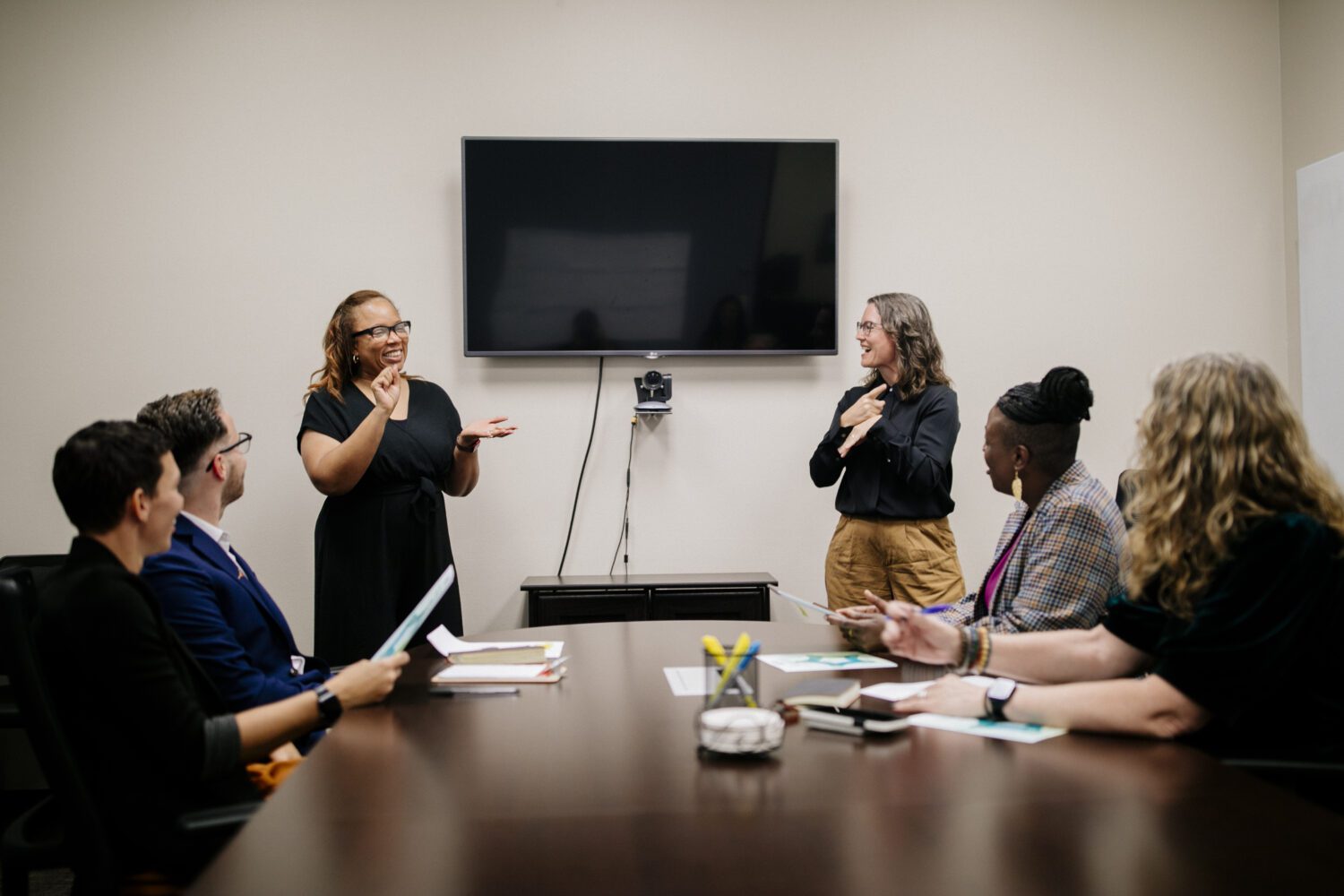[Disponible en español]
Vocational rehabilitation (VR) and pre-employment transition services (Pre-ETS) can be invaluable resources for families of deaf students. VR can help students continue their education, get training, find a job, and more. Pre-ETS is a subset of VR services that provides specific education and training to prepare students with disabilities for postsecondary settings.
But, accessing and maximizing these valuable resources can feel like a maze of red tape, paperwork, and headaches.
Plan Your Future: A Guide to Vocational Rehabilitation For Deaf Youth, a new resource from the National Deaf Center on Postsecondary Outcomes (NDC), helps deaf youth and their families know what services are available, figure out who to contact, and gather the right information to ensure they get the most out of their state’s VR services. The guide is available in English, Spanish and ASL.
“VR is celebrating its 100th anniversary this year, yet we know that these services are not always used to their fullest potential,” said Carrie Lou Garberoglio, PhD, NDC director and professor at the College of Education. “This guide is designed to be a straightforward outline for families as they use VR services. With more information, we hope that deaf youth and their families will be able to get more from their VR experience.”
Get the Most Out of VR Services
The guide clearly explains common terms used by VR offices, outlines what services may or may not be available, and explains how to find out if you qualify for services. Though each state has its own processes and requirements, the information in the guide can help families regardless of where they live within the U.S. and its territories.
Deaf youth can get services from VR if they meet the following conditions:
- are willing to work.
- have at least one disability.
- can benefit from VR services for preparing to get, and keep, a job.
The guide helps families know what they will need to bring to their first appointment, and what type of questions they should expect from their VR counselor.
In addition, it provides guidance for resolving conflicts – such as when a student does not agree with your counselor’s assessment or when a counselor is unresponsive – or getting in touch with their counselor.
There are also tips for getting the most out of VR services and a checklist that can be downloaded separately to use as a starting point. The checklist can be used by families when planning their meeting with VR, or could be used by educators as a classroom activity.
Your Future Awaits!
In addition to the VR guide, NDC has a host of resources to help deaf youth and their families navigate the transition from high school to college, training or career. The COVID-19 Information page contains a list of tips for playing Deafverse, managing online classes, using hearing assistive technology at home, and more.
Also read the frequently asked questions the NDC | help team receives from students and families. The help team is available via email at help@nationaldeafcenter.org to answer questions, provide resources, and connect you with the right people.








